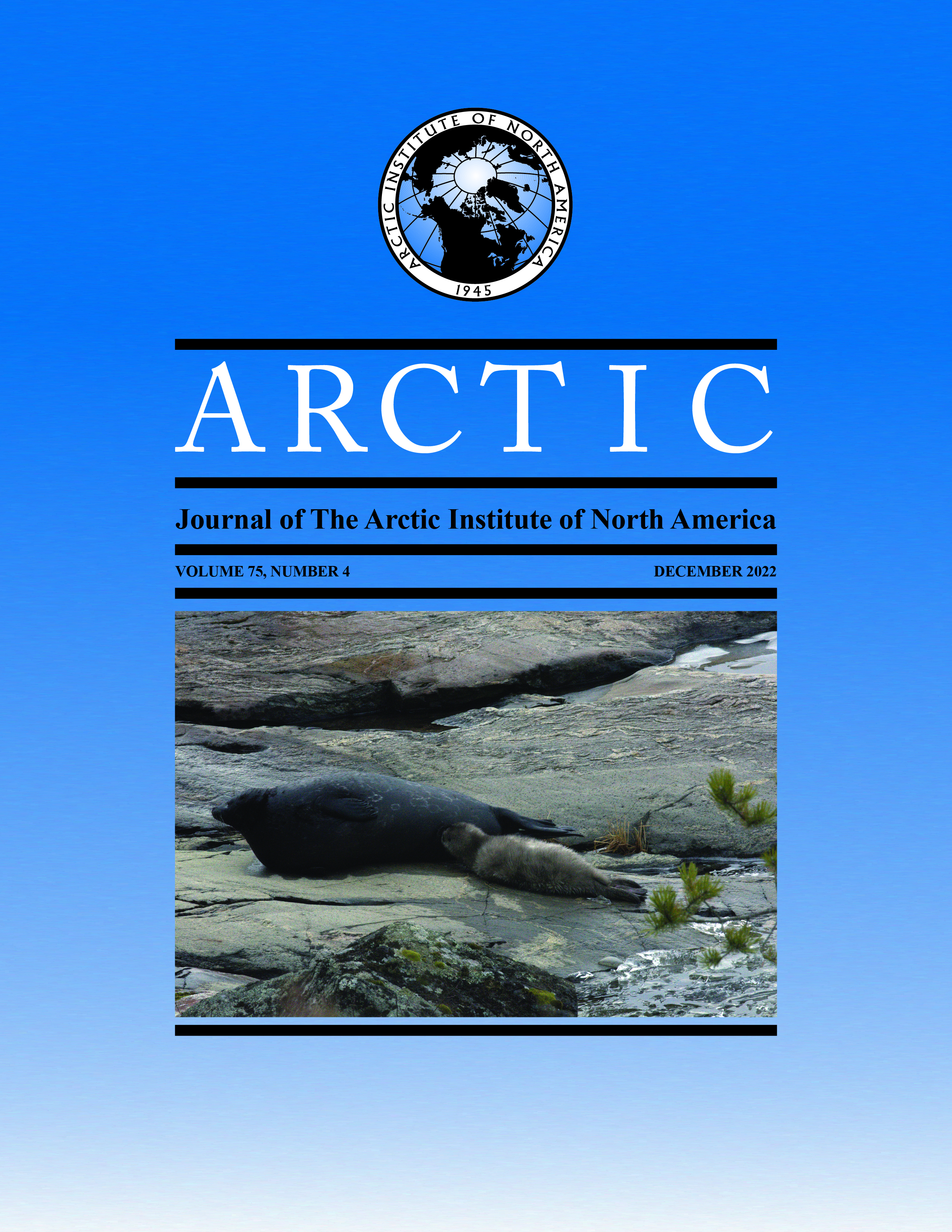Trends in Subsistence Harvests of Ice Seals in the Yukon-Kuskokwim Delta Region, Alaska, 1962 – 2018
DOI:
https://doi.org/10.14430/arctic76302Ключевые слова:
ringed seal; bearded seal; spotted seal; ribbon seal; Bering Sea; Yup’ik; household surveys; seal bountyАннотация
Ringed (Pusa hispida), bearded (Erignathus barbatus), spotted (Phoca largha), and ribbon seals (Histriophoca fasciata), or ice seals, are harvested for subsistence purposes by many Alaska Native communities. We address trends in the subsistence harvest of ice seals for the Yukon-Kuskokwim Delta region of Alaska for more than 50 years using two types of data collected by the Alaska Department of Fish and Game: (1) bounty data collected from 1962 to 1972 for 16 communities, and (2) household survey data collected for seven of these communities from 1997 to 2018. Both include information on the number of ice seals harvested by each community annually. In addition, more detailed household surveys were conducted from 2008 to 2018 for Hooper Bay, Tununak, and Quinhagak, which collected data on the number of seals harvested by species, the percentage of households engaged in hunting or using seal products, and hunter perceptions. For the bounty period, we identified several years where most communities had above or below average harvests, suggesting regional drivers contributed to patterns in the ice seal harvest. For the seven communities with household survey data, the mean total harvest estimate during the household survey years was only slightly lower than during the bounty period, however, the human population doubled during this time, resulting in a substantial decline in the mean number of seals harvested per person. The more detailed surveys for Hooper Bay, Tununak, and Quinhagak also showed declines in seal harvests during the most recent decade. The declining harvest in some communities may be driven by reduced participation in hunting and less use of seal products. Ongoing sea ice loss is also likely contributing to the decline in harvest across the region. Current seal population estimates indicate all four species are abundant in Alaskan waters, and most hunters have not observed changes in seal abundance.
Скачивания
Загрузки
Опубликован
Выпуск
Раздел
Лицензия
Copyright (c) 2022 ARCTIC

Это произведение доступно по лицензии Creative Commons «Attribution» («Атрибуция») 4.0 Всемирная.


